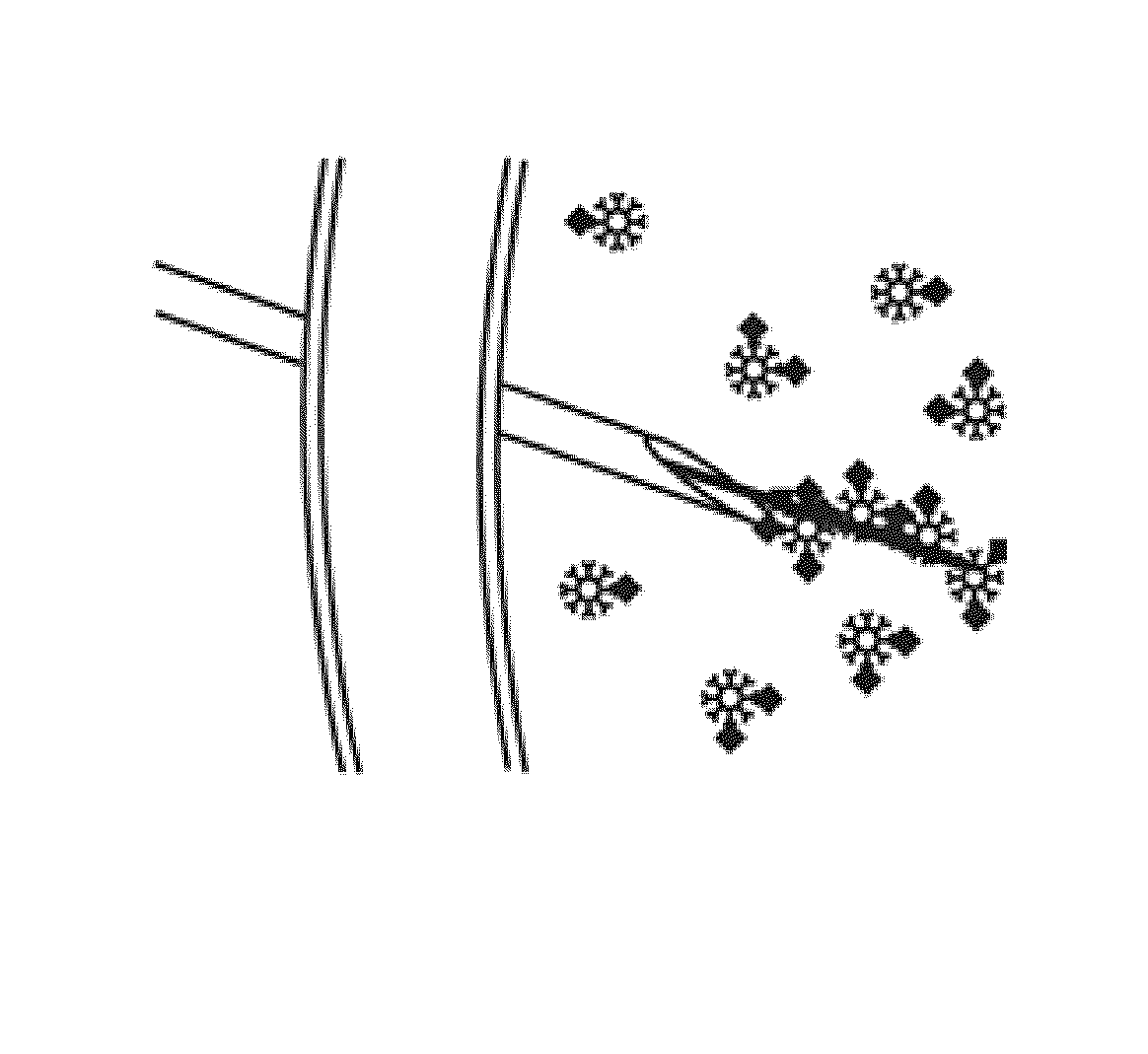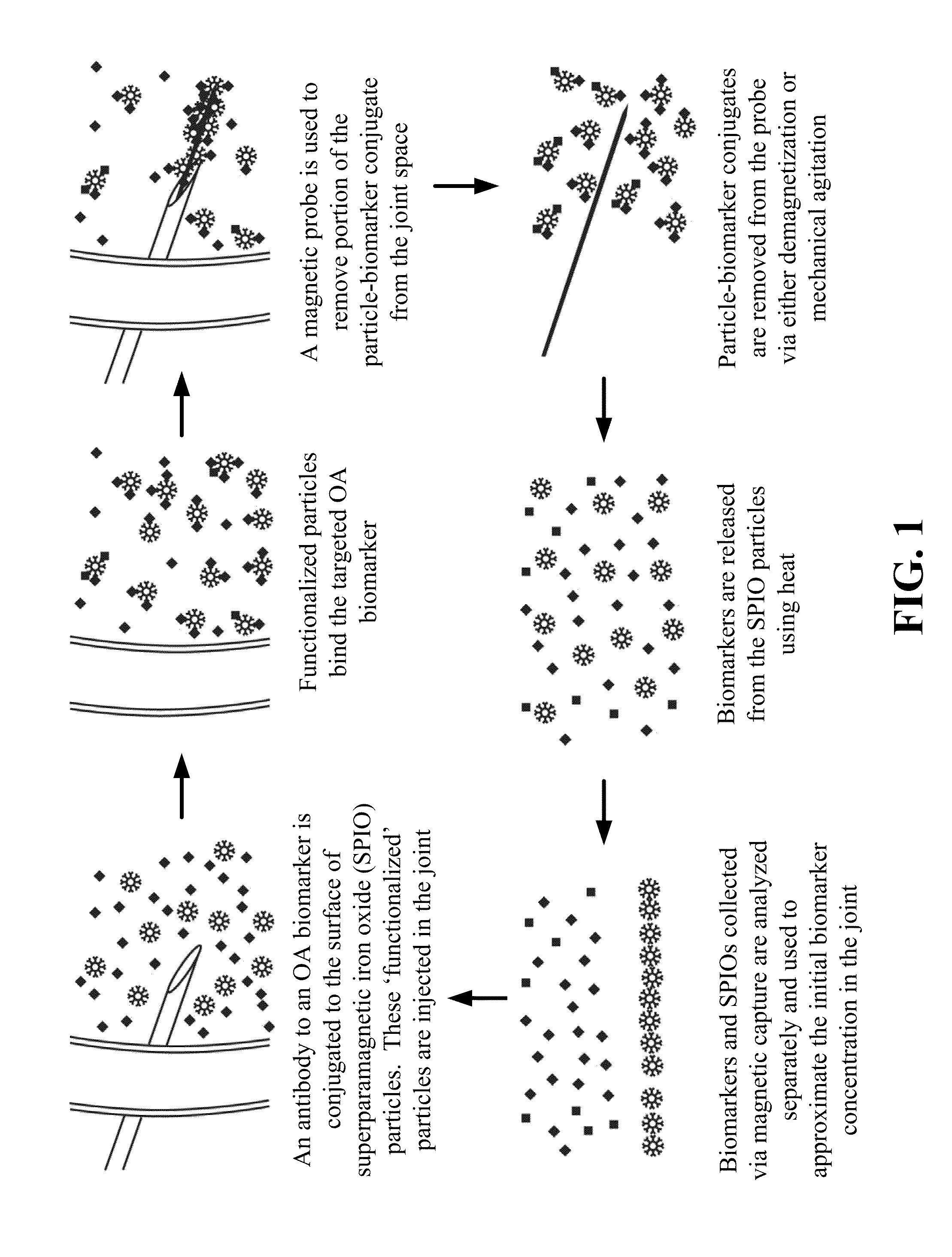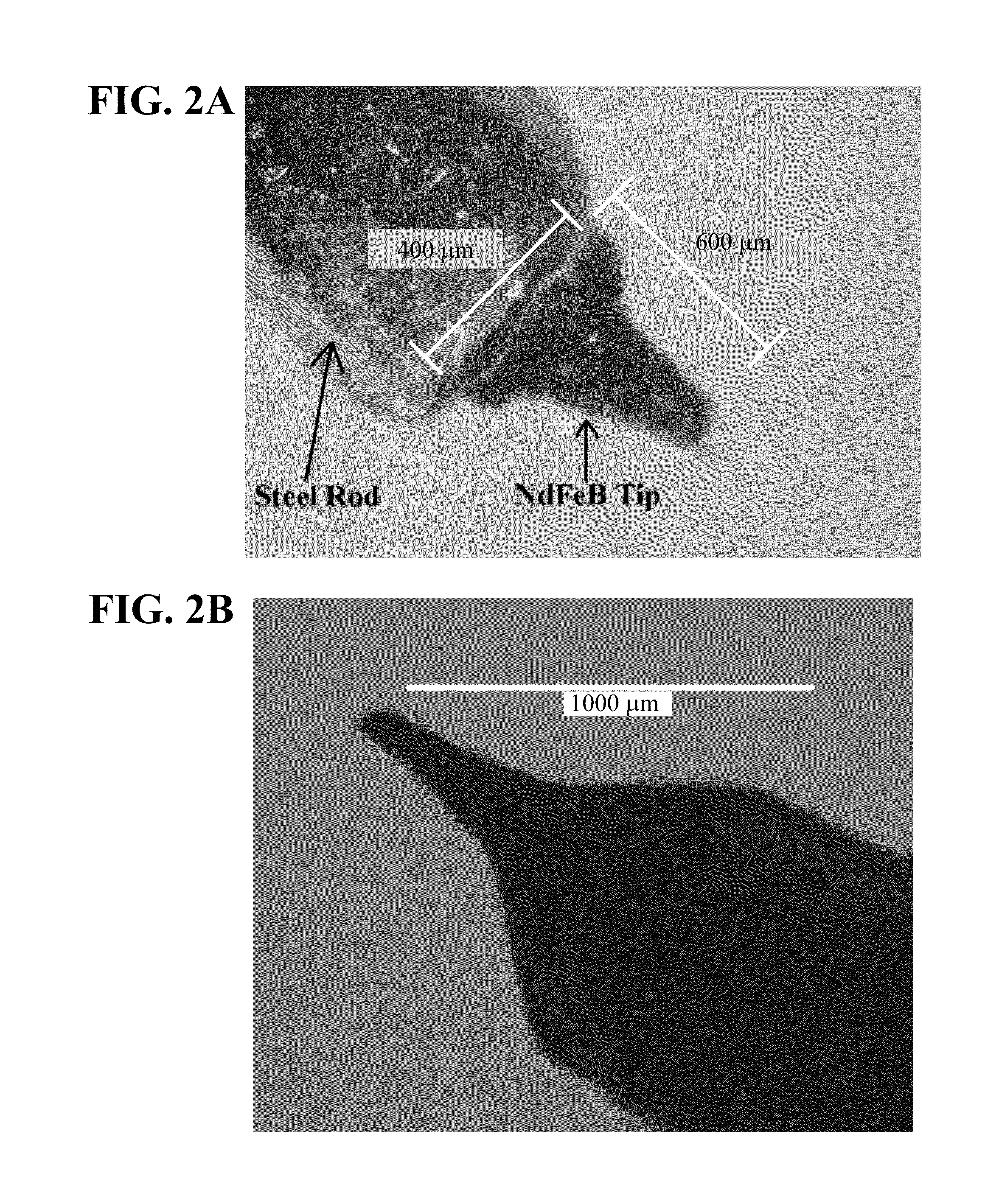Magnetic apparatus and methods of use
a magnetic device and magnetic technology, applied in the field of magnetic devices and methods, can solve the problems of critical lack of disease-modifying oa drugs (dmoad), biochemical changes detectable, and chronic inflammation that contributes to joint destruction
- Summary
- Abstract
- Description
- Claims
- Application Information
AI Technical Summary
Benefits of technology
Problems solved by technology
Method used
Image
Examples
example 1
Manufacture of Magnetic Needle Tip
[0048]A magnetic needle tip was laser-machined from an NdFeB permanent magnet using a diode-pumped solid-state laser operating at a normal 10-15 picosecond pulse width and 355 nm wavelength. An 800-micron-thick disc of NdFeB was placed under the laser, and the laser cut down through the thickness of the disc starting with a 50×50 micron square at the top and reaching a base of approximately 500×500 microns. This resulted in a pyramidal shape with a height of approximately 800 microns and a tip width of approximately 50 microns.
[0049]During the above process, the laser remains nearly perpendicular to the magnet. The pyramidal shape is achieved by using the aspect ratio (shadowing effect). The laser starts at the top of the magnet with a very small square (shown in dark grey in the middle of the “X” in FIG. 4), and as the laser cuts deeper into the magnet, the square expands due to aspect ratio limitations. By the time the laser cuts all the way throu...
example 2
Determination of Efficiency of Magnetic Particle Harvesting
[0051]Microneedles were placed in a solution of polystyrene / iron oxide composite fluorescent superparamagnetic particles with approximately 30,000 particles / μL (1 μm particle diameter). Particles collecting on a magnetic needle can be seen in frame grabs from a video. In this experiment, microneedles were able to collect 100,000-900,000 microparticles from the solution. FIG. 5 shows the results of this assay, which demonstrate that NdFeB magnetic microneedles can collect polymeric particles with SPIONs embedded within the particle core.
example 3
Time Dependencies for Binding and Release of the CTX-II Biomarker to / from Anti-CTX-II Conjugated Magnetic Particles
[0052]Approximately 106 million of anti-CTX-II conjugated magnetic particles (approximately 220 antibody molecules per particle) were mixed with ether non-treated or hyaluronidase-treated bovine synovial fluid (SF) and subject to constant gentle mixing (final volume 900 μl). FIG. 6 shows that after 2.5 hours (6B) or indicated time intervals (6A), 100 μl aliquots were taken for analysis.
[0053]Particles were separated from synovial fluid by centrifugation. Pellets were washed with PBS containing 0.05% TWEEN-20, 2% BSA, and 2 mM EDTA for 1 minute (6A) or for indicated amounts of time (6B). Then bound CTX-II was released from the particles by heating for 3 minutes at 85° C. (see control experiment shown in FIG. 9). Samples were analyzed for CTX-II using Serum Pre-Clinical CartiLaps ELISA kit. These results show no dependence on the synovial fluid viscosity.
PUM
| Property | Measurement | Unit |
|---|---|---|
| Length | aaaaa | aaaaa |
| Length | aaaaa | aaaaa |
| Angle | aaaaa | aaaaa |
Abstract
Description
Claims
Application Information
 Login to View More
Login to View More - R&D
- Intellectual Property
- Life Sciences
- Materials
- Tech Scout
- Unparalleled Data Quality
- Higher Quality Content
- 60% Fewer Hallucinations
Browse by: Latest US Patents, China's latest patents, Technical Efficacy Thesaurus, Application Domain, Technology Topic, Popular Technical Reports.
© 2025 PatSnap. All rights reserved.Legal|Privacy policy|Modern Slavery Act Transparency Statement|Sitemap|About US| Contact US: help@patsnap.com



